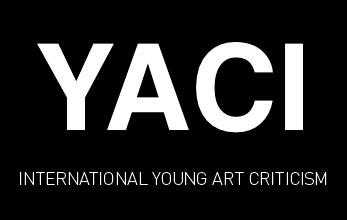PICarte, a new art critique
Art criticism has always accompanied the legitimisation of an artist or a movement. But what has become of art criticism today?
In response to the need and desire to support contemporary creation, we offer a different way of doing art criticism. The intention of PICarte (Percorsi Italiani di Critica d’arte) is to deal with the realities of the contemporary art scene and beyond. We like the idea of a sound reminiscent of the English verb “to pick”, halfway between “choose” and “take”, followed by the word art, which underlines our intention. We will visit exhibitions by emerging, established or bored artists and write about them to make you passionate or just curious. We will cover familiar realities of the contemporary scene, offering you ever-changing interpretations, as well as informing you about little-known places that hide unexpected treasures. We will interview young protagonists of artist-run spaces to make more interesting those urban realities about which we sometimes complain, somewhat unfairly, about the lack of cultural offer, and we will tell you what is happening nationally and internationally.
PICarte is in fact an independent collective of art critics, based in Italy but linked to other independent collectives scattered all over the world, from France to Taiwan, from Germany to the Republic of Cuba. We are critics and critics of all nationalities, united under the great umbrella of YACI – International Young Art Criticism, an organisation founded in 2015, but also a free online magazine that collects the texts of the authors of each collective that is part of it. The desire is to make texts written by different voices available to as many people as possible. In order to pursue and realise this desire to be widely accessible, all publications will be available in the original language and in English. YACI is a collection of artistic, intellectual and sensual discoveries from all over the world, shared by writers committed to free criticism, at the service of artists and aimed at the general public. For those who are more sceptical about contemporary art, this does not detract from the fact that it is sometimes possible to come across works that deal with art that is already historicised, but that is revitalised by a gaze that is increasingly detached from the time that produced it, thus offering diverse and wide-ranging suggestions.
Our approach is straightforward, and when you read the articles you will see that our writing styles are very different: we have chosen to avoid the use of impersonal sentences, which create a distance between the text and the reader. More than that, we have chosen to eliminate them because it is impossible to give objectivity to what is inherently subjective: in writing, our vision as art historians and historians with a certain experience behind us cannot be the same as that of others, just as it cannot be the same as that of a financier or a dealer. So why should we use the impersonal to tell the story of art?
The intention is to reveal the sometimes unspoken and hidden beauty of works of art, to unleash the beauty of understanding that it has taken an artist months, years of research to reach a certain level of knowledge that he expresses through his art, but also of the effort and fatigue he has put into digging inside himself and pulling out.
We believe that through art it is possible to draw paths and lines that cross, why not, from one discipline to another, under the same desire to discover and create. Try, even for a moment, to move away from the idea that art responds exclusively to a hedonistic need, and accept instead the fact that art is that and many other things at the same time. In this way, we see that every work of art is a product of the historical moment in which it was created, which may have influenced or been influenced by the writers of the day, the politics of the moment, and so on, which makes it possible to extend the discourses that can be traced back to an infinite range of possibilities.
We see art as a medium through which we can communicate different ways of discovering worlds and realities. All with the passion that we breathe and that we want to share with you.
Costanza Paolini


